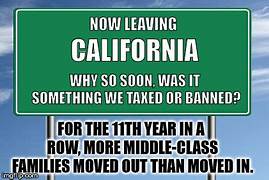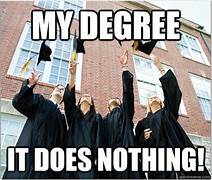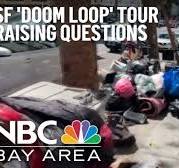Mayor Breed wants to make sure driving a car in San Fran is hell. She closed the major street in town, Market St. She has closed dozens of other streets to cars. A tourist area near the Golden Gate Bridge is being closed to cars. Now she wants to uses buses and creation of HOV lanes to further thwart tourists, visitors and customers coming into San Fran.
“The Municipal Transportation Agency Board of Directors approved two proposals on Tuesday intended to limit single occupancy car traffic and prioritize uninterrupted travel of Muni buses along key corridors.
Under the first proposal, approved in a 5-1 vote, the right lane on parts of Highway 1 and Highway 101 within The City will be converted into high occupancy lanes for vehicles with two or more passengers, including transit, and those making a right turn.
These HOV lanes will be rolled out using white paint and signage on Lombard Street and Richardson Avenue between Lyon Street and Van Ness Avenue as soon as the end of April. Implementation will follow on Crossover Drive from Lincoln Way through Golden Gate Park and up Park Presidio Boulevard to Lake Street as soon as adequate street-painting materials become available.”
London Breed is closing the city of San Fran. The good news is that real businesses are leaving the City and the population is down 10% from a year ago. No tourists are around. This is a city that is dying, not by murder, but by suicide.
Transit and high-occupancy vehicle lanes coming to some of The City’s busiest streets

Changes intended to improve transit reliability as traffic increases with reopening
Carly Graf, SF Examiner, 4/21/21
Muni has run with improved reliability and shorter travel times throughout the pandemic, despite a decrease in service hours system wide.
But with San Francisco’s gradual emergence from the COVID-19 pandemic already bringing with it a demonstrated uptick in vehicle congestion, that progress could quickly be unraveled.
The Municipal Transportation Agency Board of Directors approved two proposals on Tuesday intended to limit single occupancy car traffic and prioritize uninterrupted travel of Muni buses along key corridors.
Under the first proposal, approved in a 5-1 vote, the right lane on parts of Highway 1 and Highway 101 within The City will be converted into high occupancy lanes for vehicles with two or more passengers, including transit, and those making a right turn.
These HOV lanes will be rolled out using white paint and signage on Lombard Street and Richardson Avenue between Lyon Street and Van Ness Avenue as soon as the end of April. Implementation will follow on Crossover Drive from Lincoln Way through Golden Gate Park and up Park Presidio Boulevard to Lake Street as soon as adequate street-painting materials become available.
They’ll be enforced on weekdays between 5 a.m. and 8 p.m., and the City Traffic Engineer has the authority to raise the occupancy minimums to three or more passengers with Caltrans approval.
Director Steve Heminger, the only board member who voted against the project, wanted to see comparative analyses of a two-person occupancy minimum, three-person occupancy minimum and transit-only alternatives.
While SFMTA analysis of current travel patterns concluded the changes would only have minor impacts on traffic initially, some residents from surrounding neighborhoods said during public comment that they were worried congestion on the Golden Gate Park throughfare — already worsening due to the 19th Avenue Infrastructure Improvement Project — would become worse..
“All decisions should be data driven, and I look to SFMTA for solutions to improve street safety and how we share our roads to help us get from point A to point B efficiently,” said Supervisor Connie Chan, who represents the Richmond District. Chan said she looked forward to seeing analysis of the project but also urged SFMTA to expand transit service.
The SFMTA board also unanimously approved plans to install new temporary transit-only lanes along the 1-California bus line through Chinatown and Nob Hill, areas that are particularly transit-dependent.
Roughly 65 percent of households in those two neighborhoods don’t own a car, more than double the 31 percent for households citywide, according to the board presentation.
Some blocks will have one travel lane converted full-time or part-time to a transit-only lane, while others with existing part-time transit-only lanes will see those restricted windows extended. This corridor will also be the first to see the resumption of tow-away no parking zones, staff said, addressing callers who testified that cars regularly disregard the signage and use transit lanes to park or load.
All told, the proposal impacts 218 parking spaces across the Financial District, Chinatown and Nob Hill, only 43 of which are actually affected by implementation of an entirely new transit-only lane.
That number would have been higher, but Nob Hill and Chinatown residents expressed concerns about possible impacts on parking and curb access. SFMTA agreed to nix two blocks of transit-only lanes on Clay Street between Leavenworth and Jones streets and between Taylor and Mason streets, as well as limit the operating hours on others.
“I also want to say how disappointed I am that SFMTA watered down the proposal which, I believe, is in conflict with San Francisco’s ‘transit-first’ policy. Specifically I’m talking about the scaling back of this plan to provide more street parking at the expense of better bus service,” said Parker Day, a resident of Nob Hill and member of San Francisco Transit Riders, during public comment. “Most of my neighbors don’t have a car, so how can parking on Clay Street be more important than the thousands of riders who depend on the 1-California?”
These street changes follow nearly a year of work on the part of SFMTA to leverage severely constrained resources towards improving service reliability and decreasing travel times during the pandemic through, in part, the approval of 12 miles of temporary emergency transit-only lanes citywide, six of which have already been installed.
On these corridors, transit times have largely remained steady even as traffic has ticked back up, and reliability has increased since the pandemic. These metrics are key to avoiding the feared “transit death spiral,” in which slow or unreliable public transit ultimately discourages riders from using it altogether, which means operating costs go up and revenues go down, staff said.
Many callers to Tuesday’s meeting urged the agency to be bold in its pursuit of a robust, reliable transit network.
“Time after time these projects get watered down and pander to car parking, but dozens of us have commented that it violates transit-first, so, seriously, please answer, how do we actually enforce transit first?” said Robin Kutner. “Our planet is on fire. Forget parking. Speed up buses.”
Both projects are temporary pilot measures, required to sunset 120 days after the conclusion of the public health order unless they’re made permanent, in some version, prior to that date.
Work on proposals for permanent legislation for five of the temporary transit-only lanes is currently underway, and SFMTA plans to evaluate the impact of the HOV lanes before deciding how to proceed.
“This is genuinely a temporary pilot,” SFMTA Director Jeffrey Tumlin said. “We know it’s going to need adjustments as it goes along before we make a final decision about what the configuration should be long-term.”



